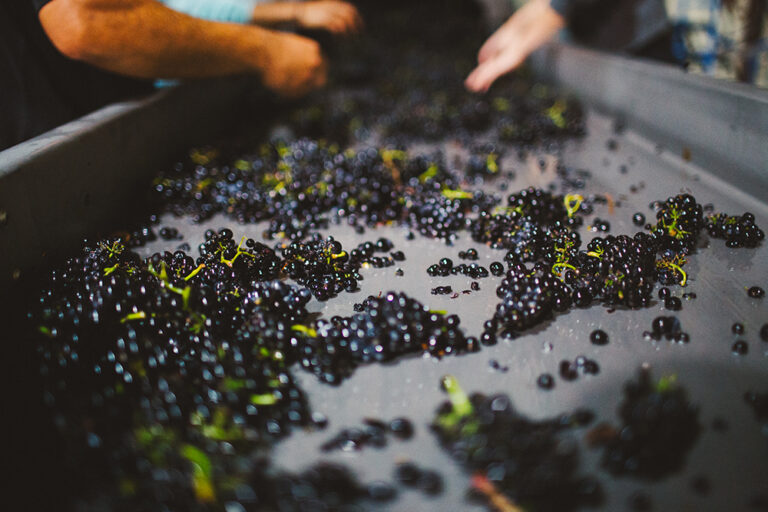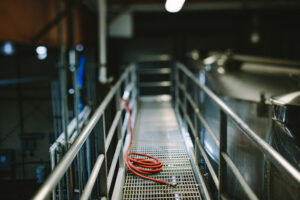
What does a typical day for you look like? If you’re reading this in the 21st century from the modern, industrialized U.S., nearly all your daily tasks require readily available energy in the form of electricity or fuel.
From industry, to transportation, to powering our homes and businesses, the U.S. produces and uses a considerable amount of energy. While energy comes from several sources, fossil fuels are the primary source for all sectors (U.S. Energy Consumption by Source And Sector 2022).
Atmospheric carbon dioxide levels have been on the rise since the Industrial Revolution and have increased exponentially since the 1960s (Climate Change: Atmospheric Carbon Dioxide 2023). Burning fossil fuels for energy production is responsible for over 75% of global greenhouse gas emissions and nearly 90% of all carbon dioxide emissions (The Production Gap 2019).
Finding ways to improve energy efficiency is key to reducing greenhouse gas emissions and combatting climate change. Even small changes accumulate to make a significant impact.
Climate-smart companies make energy efficiency a key component of their sustainable business model. Sustainable winegrowers and winemakers have several paths to greater energy efficiency.
Do you know how much energy goes into producing your favorite bottle of wine?
Making wine is an energy-intensive process powered by batteries, fuel and electricity. Energy is used at every step of the process, including field equipment that tends to the vines and harvests grapes; de-stemmers and rollers that turn the grapes to must; and the pumps, cooling systems, bottling lines and cold storage that bring the wine to completion.
With so many uses of energy, there are many places where efficiency improvements can be made.
Options in the Vineyard/Winery
In the vineyard, tractors and heavy equipment are the highest energy users. Greater efficiency can be achieved by using equipment that covers multiple rows or uses multiple attachments.
These equipment modifications reduce the number of times tractors need to drive up and down vineyard rows, cutting fuel use and emissions. Plus, this practice reduces compaction, helping to maintain healthy soils.
Using all-terrain vehicles instead of tractors and trucks for light-duty jobs, replacing older, less efficient motors and equipment, and ensuring all these are regularly maintained compound to make significant improvements to a vineyard’s energy efficiency.
Beyond vehicles and equipment, irrigation system improvements also make an impact on energy use. Variable frequency drive motors regulate and modify pump speeds to ensure they are working at an optimal level. Many companies today even offer solar-powered irrigation pumps, so operations that cannot invest in a solar field can still access this renewable resource.

Since turning grapes into wine requires a lot of equipment and refrigeration, addressing electricity use is key to improving energy efficiency in the winery.
Conducting an energy use assessment is a great place to start. The assessment will reveal when and where energy is being used so informed optimization and conservation efforts can be made.
When the team at Center of Effort Estate in Arroyo Grande, Calif. decided to look at their energy use, they discovered several areas they could adjust to be more efficient. Over time, these changes have compounded tremendous energy savings.
Shifting their winery’s cooling system to run during off-peak hours was a simple yet powerful change. They programmed their chiller to turn off during the times in the day when energy-demand is high. The thermal mass of their tank storage keeps everything cool until peak hours are over and the chillers can kick back on.
They saw the value in investing capital into improving their energy efficiency by replacing their 15-year-old chiller with a newer, more efficient one. This new chiller allows them to bring tank temperatures down on select tanks rather than the entire plant. The upfront financial investment started paying itself off immediately in the form of reduced energy use.
HVAC needs are high in a wine production facility. Center of Effort made two changes to minimize their use: cooling the barrel rooms and case goods storage rooms with nighttime air and installing a quick-draw door to address insulation losses in their production room.
Frequent forklift traffic meant their standard garage door was often left open. While convenient for the forklift operators, this allowed cool air to escape the production room.
Now, every forklift has a garage door opener that operates a quick-draw door. The door opens in two seconds and remains open for only seven seconds, plenty of time to get in the door and not so much time that dramatic temperature changes occur.

“A lot of the changes were pretty simple and had varying impact, but all together compounded into very meaningful differences,” said Kevin Bargetto, associate winemaker.
Even before these smaller energy-efficiency changes were made, Center of Effort made a decision that would eventually turn their energy use to net-negative; they went solar.
Their solar plan went live in 2016 and was built to meet 95% of the energy needs of the winery at that time. It was a higher-than-average energy assessment for their first year being solar that compelled the team to look at how and when they were using energy and make all these improvements.
With the energy efficiency changes made over the past several years, the winery and hospitality areas are now fully powered by the sun. In fact, they are running net-negative, meaning they are even sending generated power back to the grid!
Nathan Carlson, winemaker and general manager, said the solar project “showed 100% return on investment over four years, no problem.”
Renewable energy sources play a significant role in reducing the amount of greenhouse gases released into the atmosphere. Producing energy from wind, sun and natural waterbody movement produces little to no greenhouse gases.
The amount of energy produced from renewable sources has increased over the past several decades. In 2023, the U.S. generated nearly 12 times as much solar power and 2.6 times as much wind power as it did in 2013 (Renewables On The Rise Dashboard 2023).
While he recognizes not every operation can go solar, Carlson suggested there are still plenty of areas where wineries can economize. “Question your process and make sure you are managing correctly,” he said. “Start by looking at energy set-points and asking, ‘Can we get by with less?’”
Businesses with sustainability goals know improving their energy efficiency is one of the easiest and most cost-effective ways to reduce their carbon footprint and increase their bottom-line.
They also know talking about these sustainable initiatives aligns with consumers’ shifting interests.
This alignment is so strong that some customers are even willing to pay more for wines produced sustainably, according to a 2021 study conducted by Kathy Kelley and her colleagues at Pennsylvania State University (Kelley et al. 2021).
“We’re seeing a consumer group that wants to be educated and wants to know exactly what is going on with sustainable wine production,” Kelley said.
It’s important to note the power is in describing specific sustainable practices, what they are and how they make an impact, something we like to call “telling a Sustainable Story.”
In the next Sustainable Story, learn from a Santa Barbara-based vineyard management company how working with an environment’s natural ecosystem can support a cultivated agricultural system.







